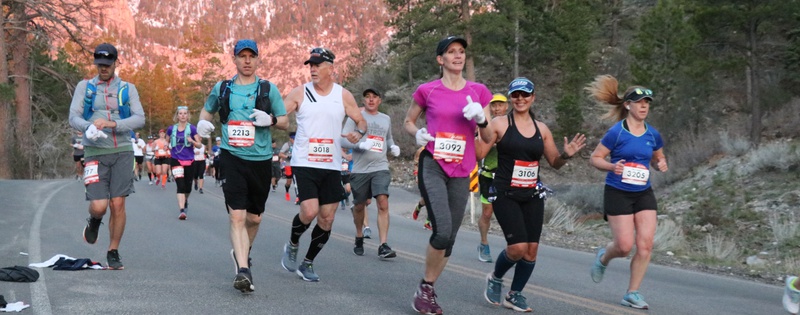
Measure your progress with this simple 4-mile workout
Training plans help keep you focused on a long-term goal, whether that goal is to “just finish” or to run a personal record, a Boston qualifier, or a specific time. A well-designed training program will have a variety of workouts that test your ability to sustain a specific pace. Whether these workouts are “speed work” intervals, hill workouts, or pace runs, they are effective ways to measure your progress over the weeks from program start to race day.
Meanwhile, much of your training program will consist of runs that are completed at lower intensity. Long runs, recovery runs, and “easy” runs make up most of the mileage in a typical training week. These are designed to develop your aerobic capacity, or your ability to simply sustain your running effort over increasingly longer distances. Because many of your workouts will not include intensity, you might get bored with the workouts that seemingly go on and on at “easy” pace. At the same time, you might be looking for ways to measure your training progress during these easier runs.
One simple workout, which I call the “building quarters” session, is something that I use to assess my training progress. I add this to my easy runs once every other week to measure my progress without feeling the pressure to hit a specific pace.

Here is how it works:
First, warm up with your typical “easy” pace. Do this for a half-mile, mile, or whatever distance you choose.
After your warmup, run a mile where you increase your effort for .25 miles. Just a simple quarter mile at slightly harder effort. There is no time goal. In fact, it is better to avoid trying to hit a specific pace or time for the quarter mile. Run by feel, and just increase your effort.
After that quarter mile, go back to your easy pace for the next .75 miles. At the end of that first mile, you will repeat the same effort as before, but will increase your effort for .50 miles. Again, there is no specific pace or time goal for this half mile. Run by feel, and just focus on increased effort. Then recover a half-mile back at your easy pace.
Next, increase your effort for .75 miles, then ease back for the last quarter mile.
Finally, run a mile at the same “increased effort” that you ran in the first 3 miles for .25, .50, and .75.
A snapshot of the workout mileage is below (after warmup):
.25 increased effort + .75 easy effort
.50 increased effort + .50 easy effort
.75 increased effort + .25 easy effort
1.0 increased effort
If you use Km instead of miles for training, the distances for this workout are 400-meter intervals (400+1200, 800+800, 1200+400, and 1600).
Over time, the regular speed work, hill work, and pace work in your training program will help you develop speed and stamina. Those typically have very specific time goals. By comparison, this “building quarters” session is one where you merely use “level of effort” to guide your workout. Over time, what you hope to see is that your pace per mile (or per Km) is gradually increasing over the 4-mile distance. If you maintain the same level of effort, i.e., how it “feels” when you do these sessions, the result is that your speed is improving week to week. In other words, you are not working harder, but your time is getting faster. That is the positive result you are seeking!
You can do the same workout with a lower distance. Half-marathoners, for example, often do not have many 4-mile “easy runs” on the calendar. In that case, simply reduce the number of miles in the session. Do .25+.75 and .50+.50 for a total of two miles. Or maybe .50+.50 and .75+.25. Whatever the combination, remember to run by feel and to increase the distance of “increased effort” by a quarter mile.
For more advanced runners, you might see a lot of easy runs that range from 7 to 10 miles on your calendar. One way to break up the monotony of these longer runs is to add this “building quarters” regimen in the middle of your workout. I often run 10-milers where I warm up for 6 miles and finish with the 4-mile “building quarters” session.
Whatever distance you run for this workout, remember to track your progress over time, note in your log or journal that this was a “building quarters” session, and see how it goes.
Paul Carmona is the Online REVEL Coach who has designed training plans specifically for REVEL downhill courses. He is a 27-time REVEL Marathon Finisher and has run multiple Boston Qualifiers on every REVEL course. His current streak is 24 successful BQ efforts in a row at REVEL marathons! You can contact Coach Paul at coach@runrevel.com.
 0
0
